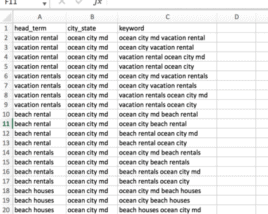Two-sided marketplaces – Customers and sellers can contribute reviews and content. The marketplace also has access to data from vendors to fill the content on pages.
Examples include eBay, Houzz, Expedia, and Rover.
Community websites – This type of website is consistently producing unique content due to active contributors and users. Q&A sites do exceptionally well, and you often see these sites rank on Google.
Examples include Quora, Pinterest.
Proprietary data – If a site focuses on generating data, then it has endless possibilities for landing page content. This type of content is also linkable to other parts of the website.
Examples: CoinMarketCap, Zillow
Curation websites – Some websites don’t have a lot of their own content; they curate information from others. This is done by scraping data from other sites to generate listings.
Examples: Indeed, Yellowpages
Ecommerce sites – Websites that sell goods and services use lots of different information such as pricing, quantity, product descriptions, and other details. Reviews are also a great way to display unique content. In many cases, e-commerce companies also write individual product information and photos to improve the user experience.
Examples: eBay, Amazon, Wayfair and practically every e-commerce site on the Internet
Editorial content – You can’t go wrong with creating original content. It adds bulk to pages and has many advantages, including writing specifically to the page, topic, or user search intent.
Examples: Medium, eater, Airbnbs user guides



